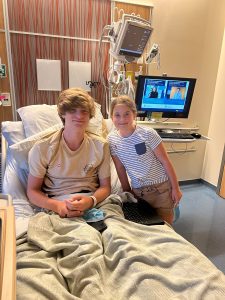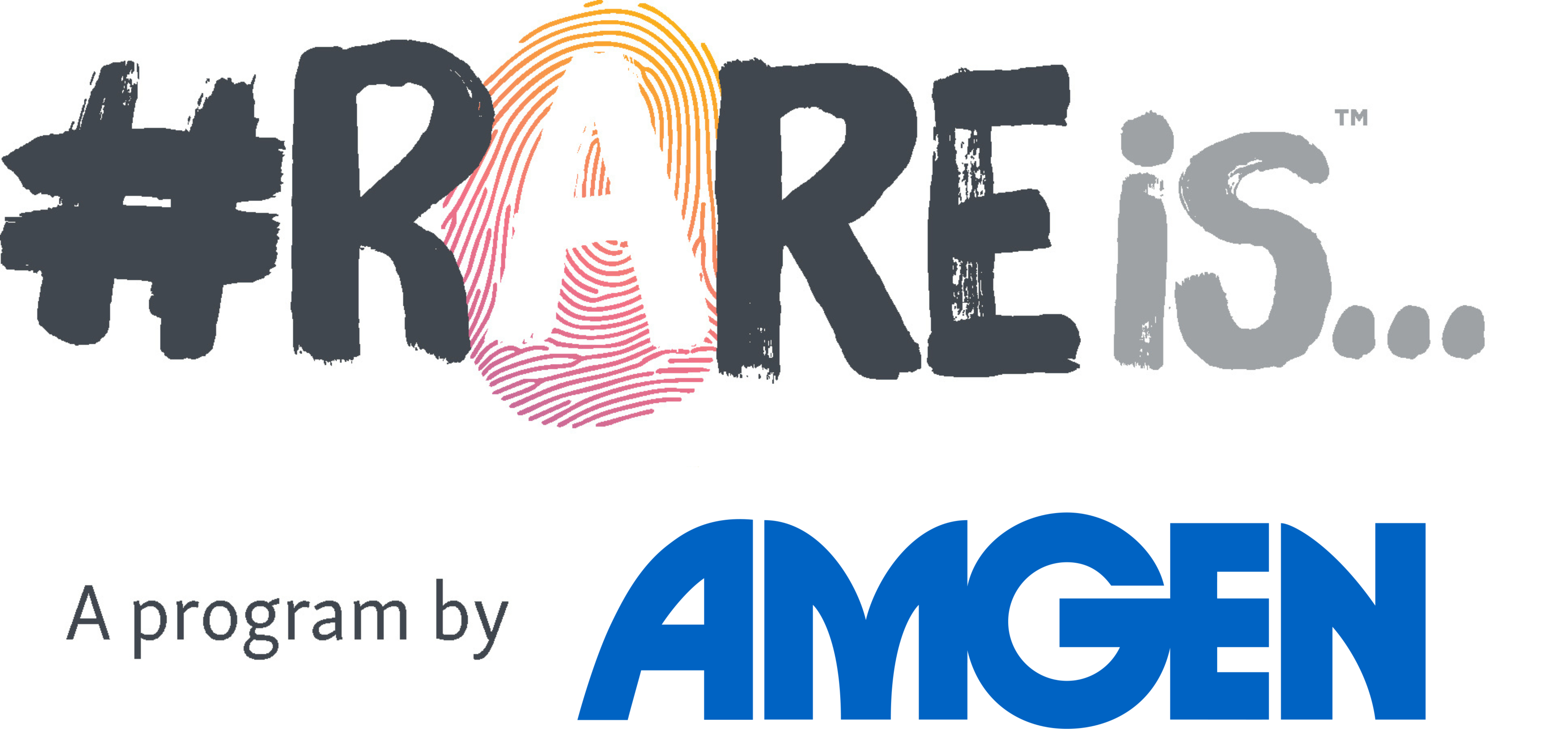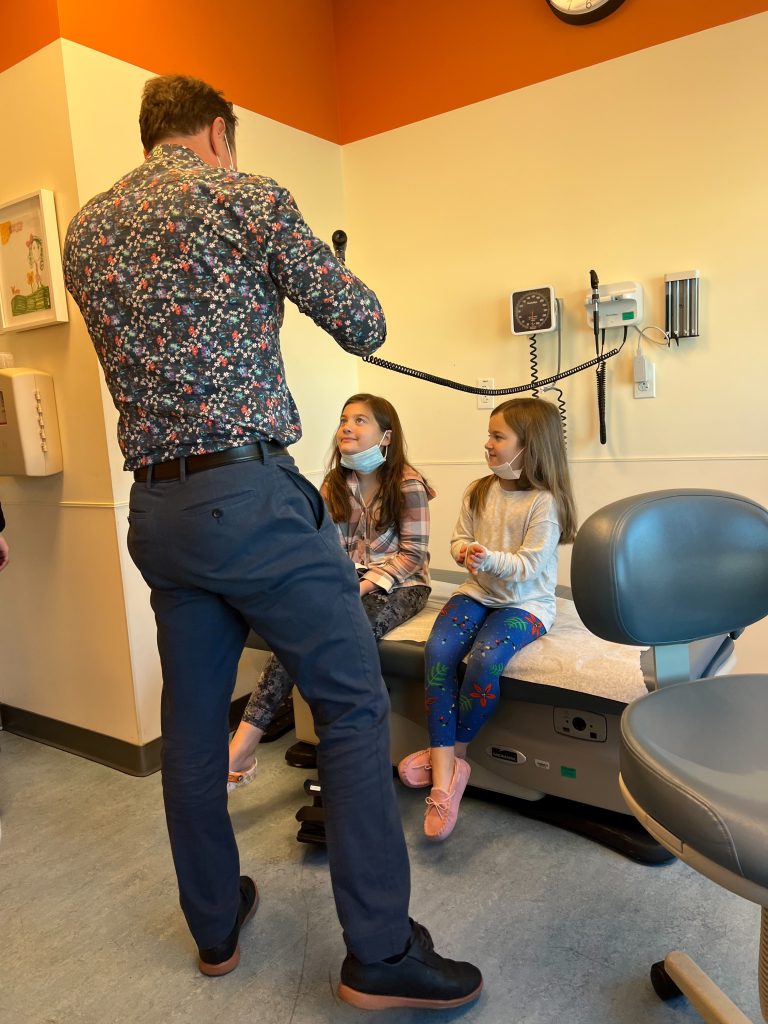Unheard Diagnoses
As many rare families know, the road to the diagnosis can be long and challenging. But what if it involves two diseases that are not only rare but their occurring in combination is also rare—even unheard of? And what if the situation involves two sisters? My husband, Dustin, and I confronted this exact situation and knew we would do whatever it takes to support and advocate for our girls, Elizabeth, 9 years old, and Charlotte, 6 years old.
The Long Road Where It All Began
When Charlotte was 22 months old, she spiked a 104-degree fever for 13 days and had rashes all over her body and was struggling to walk due to the joint pain, we knew something wasn’t right. After being in and out of the hospital, she was finally diagnosed with Kawasaki disease. We had a diagnosis, which was great, so Dustin and I went on our way. Little did we know two months later, Elizabeth, 4 years old at the time, would start to exhibit the same symptoms. Due to the severity of her labs and symptoms, she was life-flighted to a children’s hospital, where she was also diagnosed with Kawasaki disease. But something felt off – Kawasaki disease is a short-term condition that resolves within days or weeks and the girls had unrelenting, ongoing symptoms. So, it became clear that Kawasaki disease was a misdiagnosis.
As the girls’ symptoms and hospitalizations continued, fevers, rashes, joint swelling/pain, red eyes, red ears, severe airway narrowing, organ damage and even infrequent seizures persisted. So here we were, the road to finding an accurate diagnosis repeated itself. A few months later, the twist and turns to a diagnosis found us again when Charlotte experienced an episode, which led her to a diagnosis of a rare immune-mediated myopathy. Her labs pointed to Rhabdomyolysis, a type of inflammation-related kidney failure.
The consensus was that the girls were likely battling a rare genetic disease called Relapsing Polychondritis (RP), systemic autoinflammatory disease—although not all their symptoms were consistent with that diagnosis. With the girls’ symptoms worsening, Dustin and I desperately reached out to the National Institute of Health (NIH) and found they were coincidentally researching RP. Tests confirmed Elizabeth and Charlotte had RP. When Elizabeth kept getting weaker, her rheumatologist, stumped due to her weakness not coming from systemic inflammation, finally called in a neurologist specializing in neuro-muscular diseases. He asked questions no one had asked before and did a different neuro exam.
Within five minutes, he had an idea of what she was battling—and tests confirmed it; Elizabeth also had Generalized Myasthenia Gravis (MG), an autoimmune disease. The neurologist described how Elizabeth had significant decrements at her neuromuscular junctions, meaning that her brain couldn’t consistently communicate with her muscles. The rheumatologists were speechless as they had never seen a case where an autoinflammatory disease crossed over into an autoimmune neuromuscular disease so clearly.
Charlotte was then tested for MG and received nearly the same diagnosis. The medical team told us that the girls’ immune systems were so dysregulated that it was causing multiple, severe things to happen, thus the various symptoms and diagnoses. So finally, there was an explanation for the girls’ ongoing symptoms. Finally, we received accurate diagnoses.
Post Diagnosis: The Road Doesn’t End There
The girls are currently on a regimen of different treatments, and now that they are older, Elizabeth administers her own medicine and helps her little sister Charlotte, too. It’s the sweetest thing to watch. While Elizabeth and Charlotte are two brave young girls navigating an unknown territory, at the end of the day, they’re still kids who love family game night, building Legos and arts and crafts.
They go to school but with limitations. Elizabeth struggles with weakness, so playing with friends looks a bit different and Charlotte needs rest and extra meds for a play date. But it’s especially hard for Elizabeth, who occasionally has significant flares and who’s at an age where she realizes and grieves all that she’s missing—school activities, sports, etc. In her nine years of life, she’s been hospitalized at least 20 times, with stays lasting from one to three weeks and has been life-flighted on multiple occasions. In the last year and a half, she has been admitted to the hospital for over 150 days—more than any child should ever have to endure. At one point, Elizabeth had hypercapnic respiratory failure. As a mom, these moments are hard to watch and the unsettling thought starts to race through your mind, but for being so young, Elizabeth inspires everyone around her.
She says, “I asked for strength and what I got were difficulties that made me strong. To be courageous, you have to overcome dangers.” Her perspectives give us all so much-needed strength. We try to protect Charlotte from witnessing Elizabeth’s tough moments, but because she has seen her sister be brave, Charlotte is brave, too.
Changing the Face of Medicine
Where there is research, there is hope and before Elizabeth and Charlotte, it was common to overlook the connection between autoinflammatory disease and neuromuscular disease. The research that has been done on behalf of Elizabeth and Charlotte has been used to help other patients with similar conditions.
Their journey has raised hope and awareness and brought us connections we normally would have never made. After sharing our daughter’s diagnosis and symptoms in a support group on Facebook, a woman named Kara reached out and we immediately hopped on the phone and must have talked through the night while I was lying in the hospital room watching Elizabeth begin her first treatments for MG. In those hours, Kara told me about her son, Isaac, who had eerily similar symptoms to Elizabeth, yet had no answers for his progressive, fluctuating weakness. I finally told her that she should fly out to UCSF Benioff Children’s Hospital so her son could see our daughter’s team and even be enrolled in research. And they did just that.
After testing confirmed Isaac had the same initial neuromuscular condition as our girls, it was a relief to their families to have a path forward to help their son. But after several months, his symptoms got worse, and he ended up on a ventilator when his diaphragm completely failed. Fortunately, because he had answers and because the team at UCSF was directing care from afar, they were able to treat him and he was able to get well and go home.
This story is why we choose to tell our daughter’s journey. Making the decision to share publicly felt vulnerable to us and it certainly wasn’t an easy one to make, but knowing our girls had the potential to save a life, knowing that it did save a life – well, we will advocate, educate and spread awareness wherever we can.

I Can Do This!
Like so many rare families, we continue to face significant medical challenges. But there have also been some beautiful things along the way. Like, ED PA Julie and Dr. Deaugistinis, who fought so hard for the girls, and NIH’s Dr. Marcella Ferrada, who gave our family real hope and is one of the girl’s heroes. The girl’s rheumatologist always listens and comes to our rescue. She should wear a cape because she is a hero to our family. Their neurologist, Dr. Fay, spends endless hours caring for his patients and doing everything he can to give them a chance.
Many people have been so kind and helpful over the years; these people exist all over the world. The rare community is one in a million. Despite difficult days and knowing our girls wake up every day fighting life-threatening diseases, our house is full of an ‘I can do this!’ attitude. Elizabeth loves feeding her goats and doting on her pup, Piper, and Charlotte dances and sings for everyone’s entertainment. If there’s one thing we try to do, it’s to normalize what our girls go through because this is their life and, currently there is no cure. Despite all of this, these two girls are a force to be reckoned with. And an inspiration to us all.

